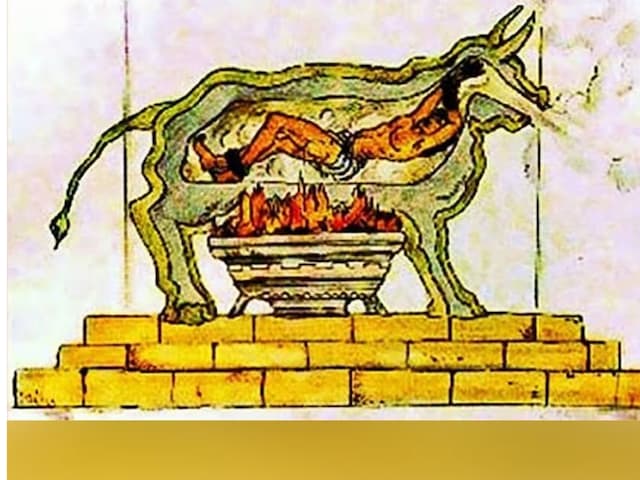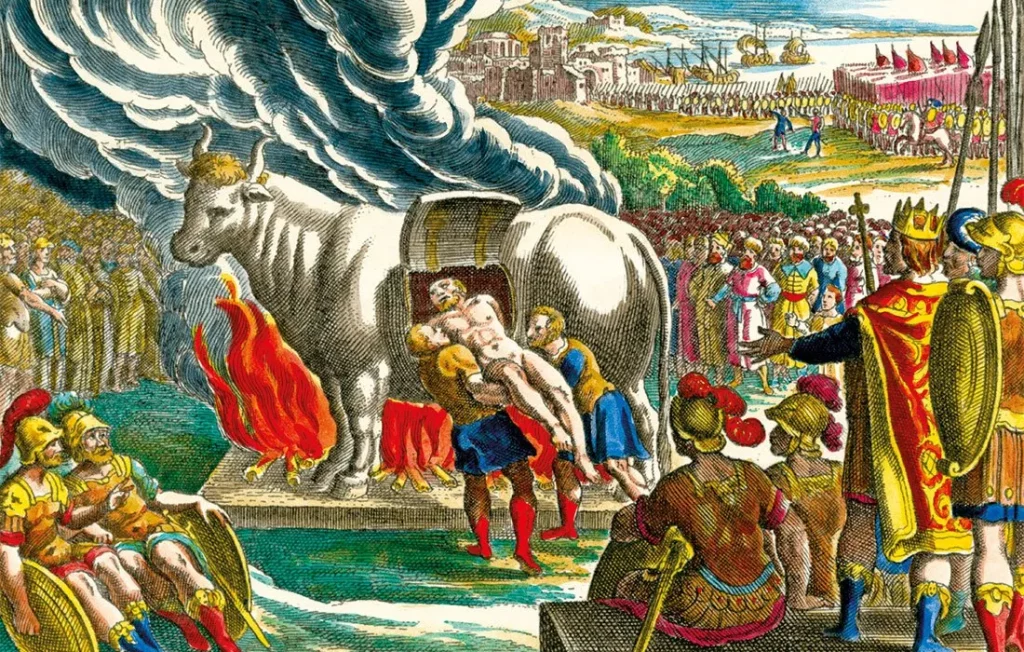The brass bull, also known as the bronze bull or the Sicilian bull, is an ancient instrument of torture with a dark and gruesome history. According to historical accounts, the brass bull was invented by Perillos of Athens, a bronze worker and inventor, during the reign of Phalaris, the tyrant of Akragas (now Agrigento, Sicily), in the 6th century BC.

Perillos designed the brass bull as a method of executing criminals and political enemies, intending to impress Phalaris with his ingenuity. The bull was crafted in the shape of a life-sized bull, with a hollow interior large enough to accommodate a human being. A series of pipes and tubes were ingeniously incorporated into the design, allowing the torturer to produce sounds resembling the bellowing of a bull when the victim was placed inside.

The unfortunate victim would be placed inside the brass bull, and a fire would be lit beneath it. As the fire heated the metal, the interior of the bull would gradually become unbearably hot, causing the victim to suffer agonizing pain as they were slowly roasted to death. The pipes and tubes of the bull’s design amplified the victim’s screams, creating a terrifying spectacle for onlookers.

Legend has it that Perillos himself fell victim to his own invention. After demonstrating the brass bull to Phalaris, Perillos suggested that he be the first to test its effectiveness. Phalaris agreed and ordered Perillos to enter the bull. Once inside, Phalaris had the fire lit beneath the bull, and Perillos was subjected to the same torturous fate that he had devised for others.
The story of the brass bull serves as a chilling reminder of the cruelty and brutality of ancient methods of torture and execution. Though the use of the brass bull eventually fell out of favor, its dark legacy continues to haunt history as a symbol of human depravity and suffering.





